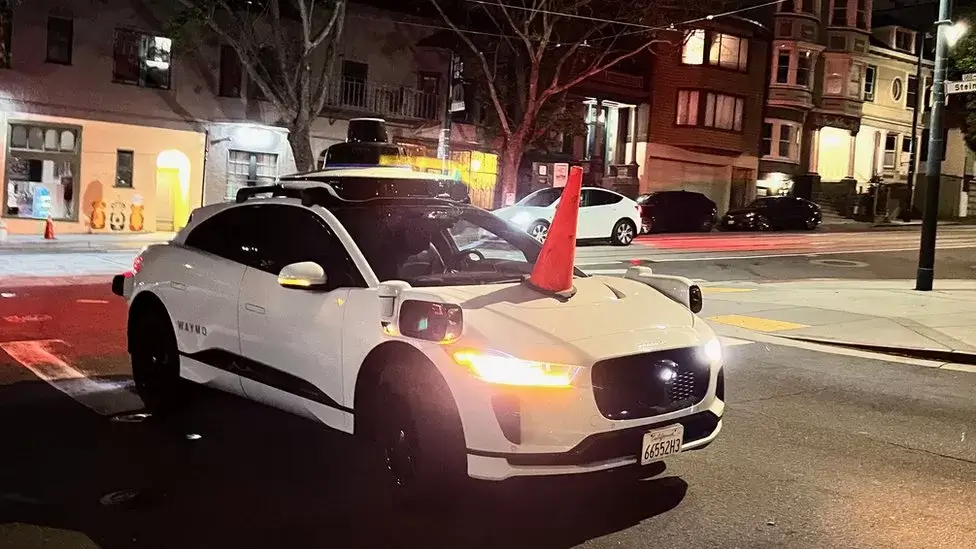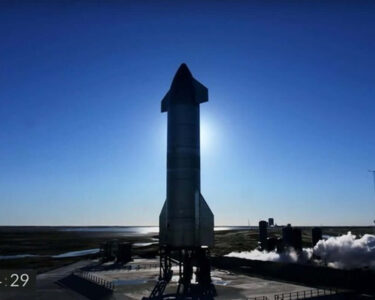As the cab glides towards me, my heart races with anticipation. The scene before me is surreal—something I had never imagined witnessing in my lifetime. The cab stands empty of a driver, beckoning me to unlock its door with my smartphone. With a sense of adventure and trepidation, I step inside, and the cab whisks me away into the night.
But just as I’m about to embark on this futuristic journey, a concerned passerby approaches. His words are tinged with apprehension: “They’re unsafe.” He recounts a near-accident involving a robotaxi and warns me to exercise caution. This passerby represents a faction within San Francisco that harbors strong reservations about the introduction of robotaxis. They view the city as a testing ground for a potentially hazardous experiment, one that jeopardizes lives.
However, there’s another layer to the controversy. An activist group called Safe Street Rebel has taken matters into its own hands, engaging in a unique form of protest called “coming.” Videos of their actions, in which they place cones on the hoods of robotaxis, have gone viral. Their message is clear: they oppose the presence of these vehicles on the city’s streets.
The issue reached a pivotal moment on August 10, 2023, when the California Public Utilities Commission (CPUC) made a decision. It granted permission for two cab companies, Waymo and Cruise, to operate their robotaxi services 24/7. This marked a significant expansion, as they had previously been limited to nighttime operations.
However, the decision followed six hours of public commentary, where citizens voiced their concerns and aspirations. Among the dissenting voices were Uber and Lyft drivers who feared losing their livelihoods to robotaxis. “Expanding self-driving taxis will cost families their jobs. As a single mom, I’m worried,” lamented Rosine, an Uber driver.
Other stakeholders, such as representatives from garbage disposal trucks and the city’s fire service, criticized robotaxis for impeding their operations. Their complaints echoed concerns that the vehicles frequently broke down, leading to obstructions.
Safety emerged as a pivotal concern. Some argued that the technology had not yet proven its reliability. Matthew Sutter, a cab driver, expressed his reservations, stating, “I embrace technology, but it’s not ready. This poses a danger to San Francisco residents.”
In the midst of this debate were individuals with disabilities, highlighting the potential exclusion they might face without human drivers’ assistance. The embrace of robotaxis, they argued, could leave disabled citizens marginalized.
Yet, there were also fervent supporters of the technology. George Janku, an orthopedic surgeon and cyclist, praised the behavior of robotaxis, finding them more trustworthy than distracted or aggressive human drivers. Jessie Wolinsky, who is blind, shared her positive experiences, citing the safety provided by Waymo cars compared to traditional ride-sharing services.
Amid these perspectives, a mother shared how traditional taxi drivers had rejected her due to her children’s car seats—a scenario robotaxis would eliminate. This diverse range of voices illustrates the complexity of the situation.
Having experienced both sides, I’ve ridden in Cruise’s robotaxis without incident, yet also encountered one that broke down suddenly, causing frustration among other drivers. These experiences reflect the technology’s potential and its ongoing challenges.
Merely eight days after the CPUC’s expansion decision, a Cruise robotaxi collided with a fire engine, prompting a request to reduce the number of vehicles on the road. City Attorney David Chiu called for a halt to the expansion, citing potential harm to San Francisco.
Cruise and Waymo remain steadfast in their belief in the safety of their robotaxis. Waymo emphasized its extensive autonomous mileage and accident-free record with pedestrians and cyclists. Cruise echoed this sentiment, citing a strong safety track record.
Nevertheless, skepticism persists among many San Franciscans. In a quiet park, I met an anonymous member of Safe Street Rebel, a figurehead of the movement. They view “coning” as a form of protest against artificial intelligence, indicating that such acts could become more frequent.
This discontent stems from the perception that San Franciscans’ concerns about robotaxis go unheard. As this activist shared, “We’re not vigilantes, just a community organizing to make ourselves heard.”
Drawing parallels to history, the activist acknowledges similarities with the Luddite movement, which resisted technological change in the 19th century. In this uncertain landscape, San Francisco stands at a crossroads. While it aspires to be an innovation hub, its journey has left many residents behind.
The robotaxi companies are confident in their vehicles’ safety, yet convincing the city’s populace remains a challenge. The coming days will reveal whether these autonomous vehicles will continue to share the streets of San Francisco or face an uphill battle for acceptance.





